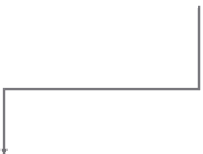Environmental Engineering Reference
In-Depth Information
the scrubber system in the industrial plant shown in the top left-hand corner of the dia-
gram, whereas
action (b)
is
contaminant management.
For the second option, i.e., contaminant management, information from material indica-
tors is required for one to determine the management course of action, as shown in Figure
9.1. The actions are (a) do nothing, (b) monitor, and (c) undertake remedial actions. In the
case of the “monitor” option, the associated indicators are
status indicators.
These indicators
essentially track the status of the various items such as water and soil quality at various
times to determine whether negative changes occur. More importantly, these system status
indicators are important markers along the road to sustainability, and where appropriate,
they may be called sustainability indicators.
Sustainability indicators
(SIs) are those indica-
tors that point the way toward achievement of the goals and objectives of sustainability. For
these indicators to have value and meaning, it is necessary to provide or specify the sustain-
ability goals or objectives. Because true sustainability may never be attained, for example,
in the case diminishing nonrenewable natural resources, the sustainability indicators pro-
vide us with a measure of nonrenewable natural resource depletion (depletion rate). By tar-
geting a depletion rate that would allow for a longer time before exhaustion of the resource,
SIs can alert us as to whether we are on target or whether drastic remedial or corrective
steps need to be taken. However, as will be evident in further discussions on indicators, SIs
are really a collection of many intermediate indicators situated as markers along the road to
sustainability—with the inal set of indicators located at the terminal point of the road. The
various intermediate indicators should set the requirements and conditions of performance
at stages along the way, as shown, for example, in Figure 9.2. The combination of these indi-
cators can be considered as “requirements to satisfy sustainability objectives.”
Revise treatment system
Not acceptable
Wastewater
Acceptable
Sludge
Solid waste
Discharge to
sewer system or
receiving waters
Lagoon or
holding pond
Landfill
Acceptable
Not acceptable
Need better barrier-liner
system
Acceptable
= Indicators
FIGURE 9.2
The role of indicators in assessing status and sustainability of operations in a plant discharging liquid and solid
wastes. The indicators in the diagram are shown as shaded ovals.























































































Search WWH ::

Custom Search